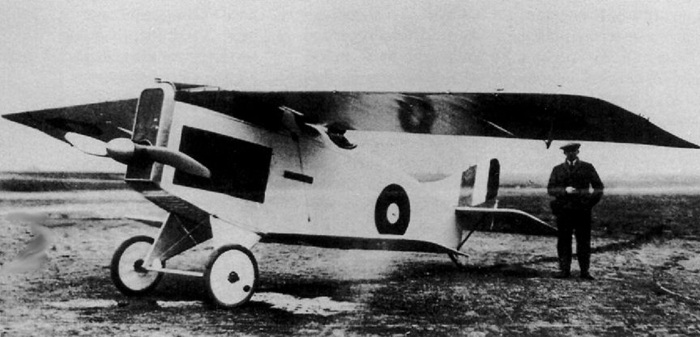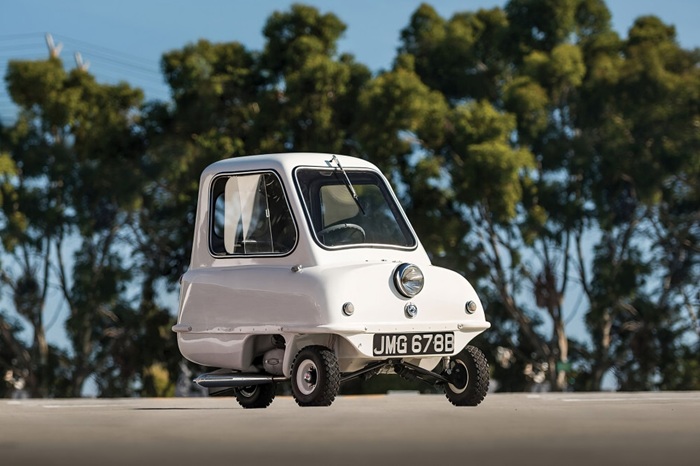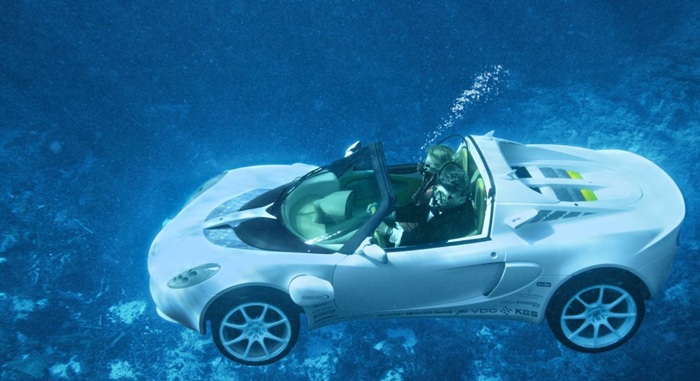

Inventors often have to push the boundaries of what’s conventional to create something unique. But sometimes this enthusiasm for new concepts goes too far, bordering on the absurd. As a result, we end up with inventions so bizarre and outlandish that it’s hard to believe they even exist, even though they were actually created—though it’s unclear why.
1. Bicycle with triangular wheels

It seemed like the invention of the wheel had already revolutionized transportation, but someone took it a step further—saying that if round wheels don’t always provide a smooth ride, they could be shaped differently. The logical conclusion to this was the creation of a bicycle with wheels shaped like a rounded triangle.
Of course, the result was quite different: a smooth ride was out of the question when this strange vehicle reached every corner of its wheel. Turning was a real disaster—the unfortunate rider often simply fell off the bike due to poor balance. However, this bicycle did find some notoriety, either as a designer piece or as part of a collection of strange vehicles.
2. Cantilever Aero Bullet

The Cantilever Aero Bullet, or “Cantilever Aerodynamic Bullet,” is perhaps one of the most absurd aircraft of the early aviation era, designed by Dr. William Christmas. The problem is that the “Bullet,” intended to be a next-generation fighter in 1919, simply couldn’t fly properly. The cause was a critical design flaw: the aircraft lacked wing struts, which ensure the aircraft’s structural integrity.
This problem was deliberate: it turns out that Christmas, for some reason, believed that allowing the aircraft’s wings to move like a bird’s would improve their performance. The result was the opposite: the very first test flight ended with the wings separating from the airframe, the aircraft crashing, and the pilot’s death. The strangest thing is that Christmas continued to receive funding for further development. Only when a second attempt ended similarly to the first and resulted in the death of another pilot was the absurd project finally shut down.
3. Peel P50

A little over half a century ago, someone dreamed up the idea of creating the smallest car possible, one that could easily cover short distances on city roads. Under this auspices, the Peel P50 was born—a car that immediately earned the title of the smallest mass-produced car on the planet.
However, that’s essentially where its positive aspects ended—instead of revolutionizing the automotive industry, it turned out to be a failure. The Peel P50 was supposed to be the pinnacle of practicality, but in reality, it was very slow, difficult to control, had a tiny trunk, and even had a tendency to roll over. However, as a collector’s item, this smallest car remains in high demand even today.
4. A teaspoon that melts in hot water

Although the search for alternative, eco-friendly materials for everyday items is a popular trend today, some inventors are clearly overdoing it. A striking example is the creation of a spoon that meets all biodegradability requirements, but begins to melt at temperatures above 30°C.
As a result, you can’t leave it in a cup of even warm tea or coffee, as it will quickly begin to deform and become soft. However, at first, it often appeared at various presentations as an example of eco-friendly utensils, although it was clearly intended for nothing more than stirring ice cream.
5. The Voynich Manuscript

The story of the Voynich Manuscript has captivated the public for over a century—ever since the antiquarian Wilfried Voynich obtained it and displayed it publicly in 1912, it has been considered one of the most mysterious discoveries of the past. This strange book, written in an unknown language and illustrated with images of often imaginary plants and animals, has long been a subject of discussion among laymen, historians, biologists, and cryptographers alike.
Despite numerous attempts to decipher the manuscript’s text, there has been no officially confirmed success. However, in their rush to solve the book’s mystery, many overlook another obvious fact: it’s completely unclear why a manuscript that literally no one can read could have been created. And given that most people believe it records scientific facts or observations, attempting to conceal them without any mention of a deciphering key seems downright absurd.
6. sQuba

Another absolutely bizarre car ever conceived was the sQuba underwater vehicle, created by the Swiss company Rinspeed. And we’re not talking about an amphibious vehicle that can swim: this car is literally capable of diving to the seabed. However, the “wow” factor only worked as a futuristic innovation, while in practical terms, the car was, to put it mildly, ineffective.
Firstly, it could dive to a maximum depth of 10 meters and traveled underwater at a speed of 3.2 km/h, with no ability to accelerate any faster. Secondly, the sQuba lacked the necessary cabin sealing, so the driver and passenger had to ride in the car wearing scuba gear. Therefore, this car found popularity only as a unique attraction for the eccentric wealthy, while others chose the simpler route of traditional diving—it’s cheaper and offers more space in the cabin.
7. Motorized ice cream cone

Today, the market offers a vast array of products clearly designed with the “lazy” concept in mind, and many of them are truly successful. But sometimes these ideas are simply too absurd, and a perfect example is the motorized ice cream cone. The gadget is literally a cone for the cold dessert, which uses a motor to constantly rotate the ice cream.
The idea was to eliminate the need for consumers to manually rotate the cone, but it wasn’t well-received, to put it mildly – eating ice cream is clearly not such a difficult task that it requires a single hand movement. So, after a brief surge of interest in this strange novelty, it was quickly forgotten, as from a practical standpoint, the gadget was ridiculous and useless.




